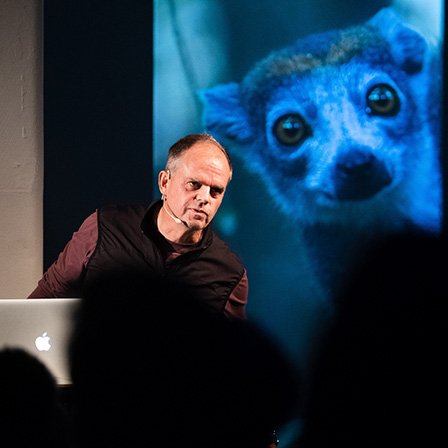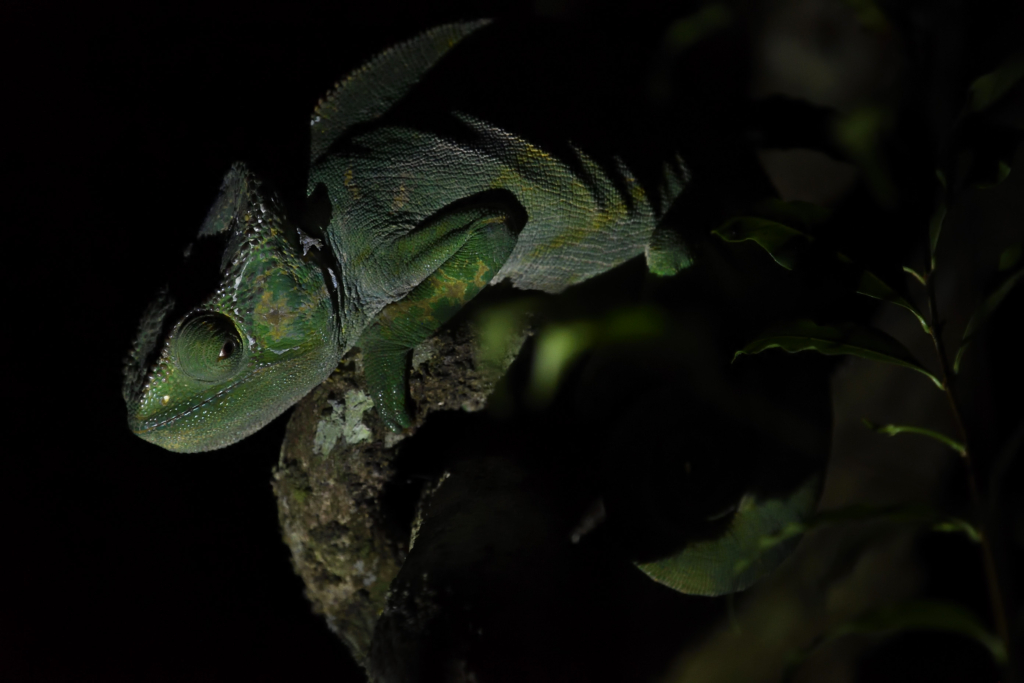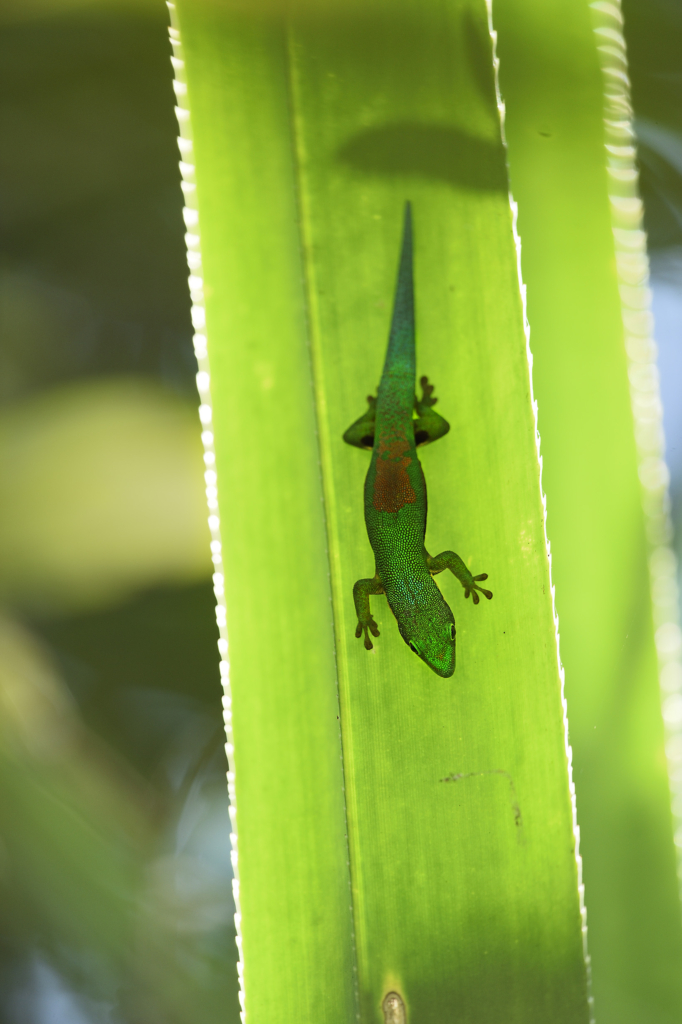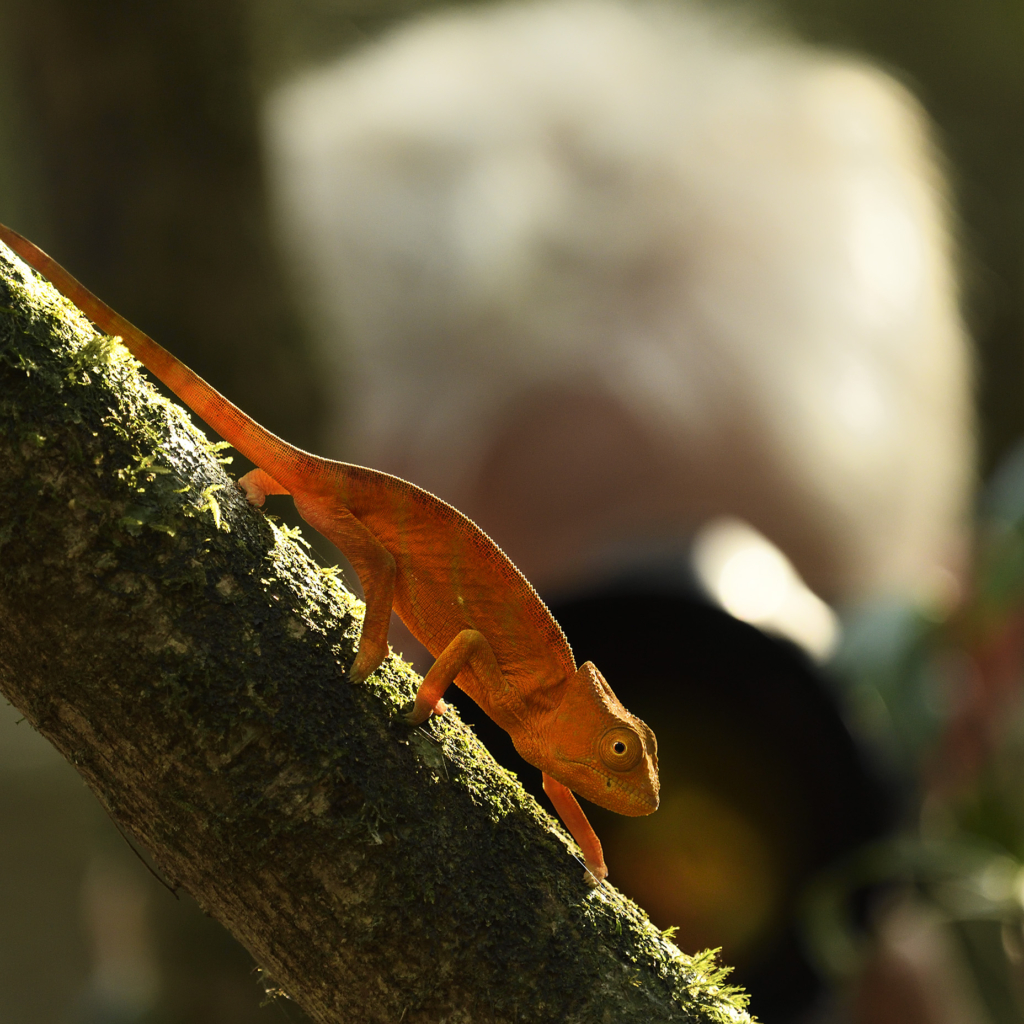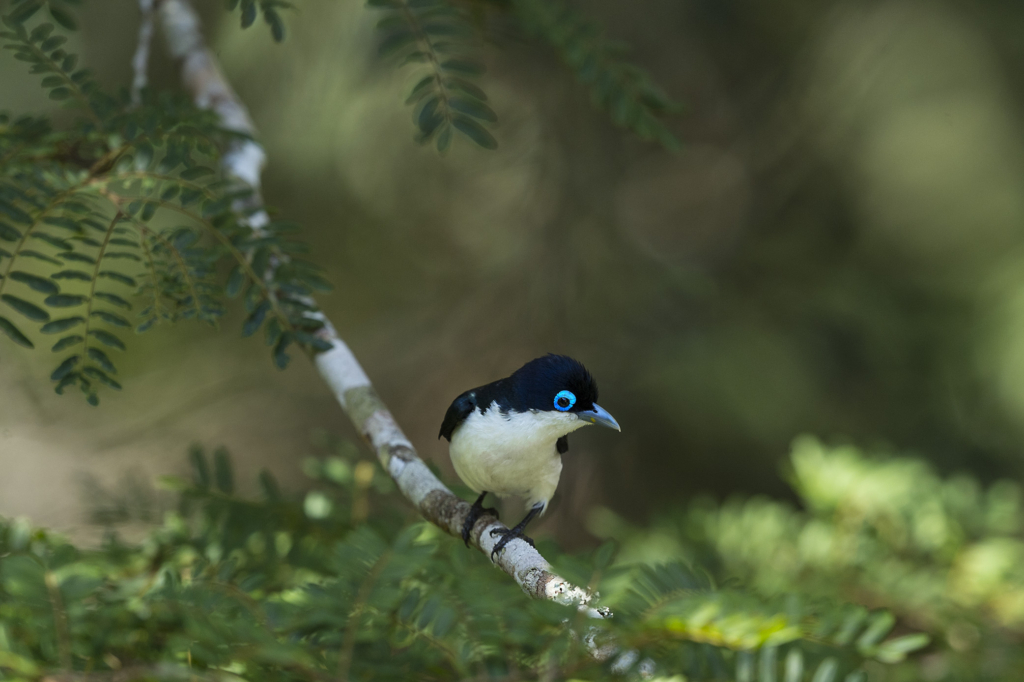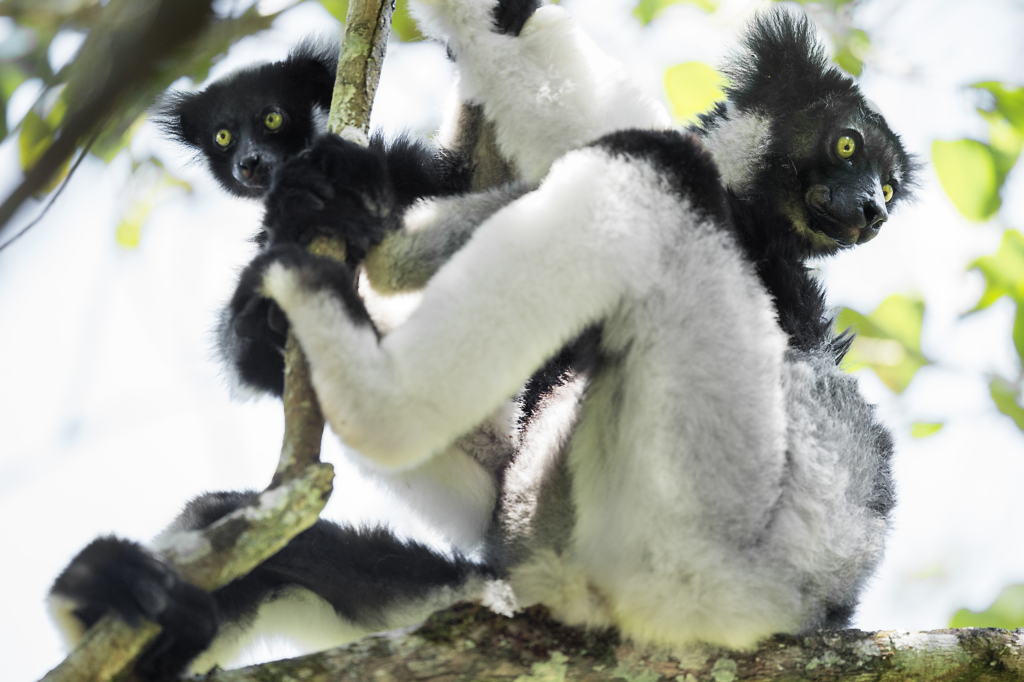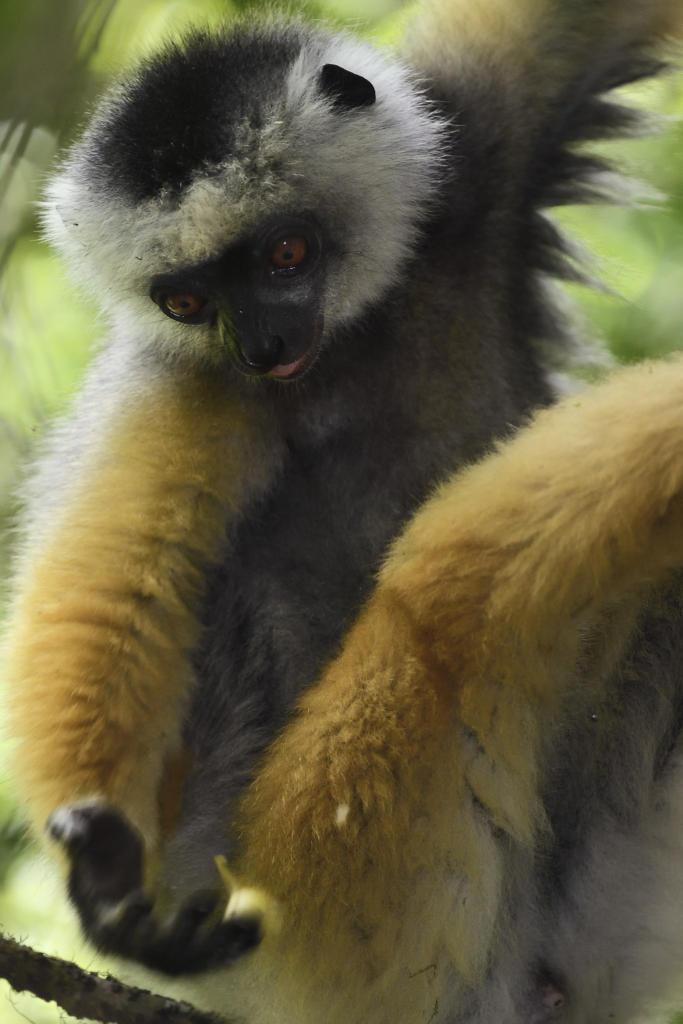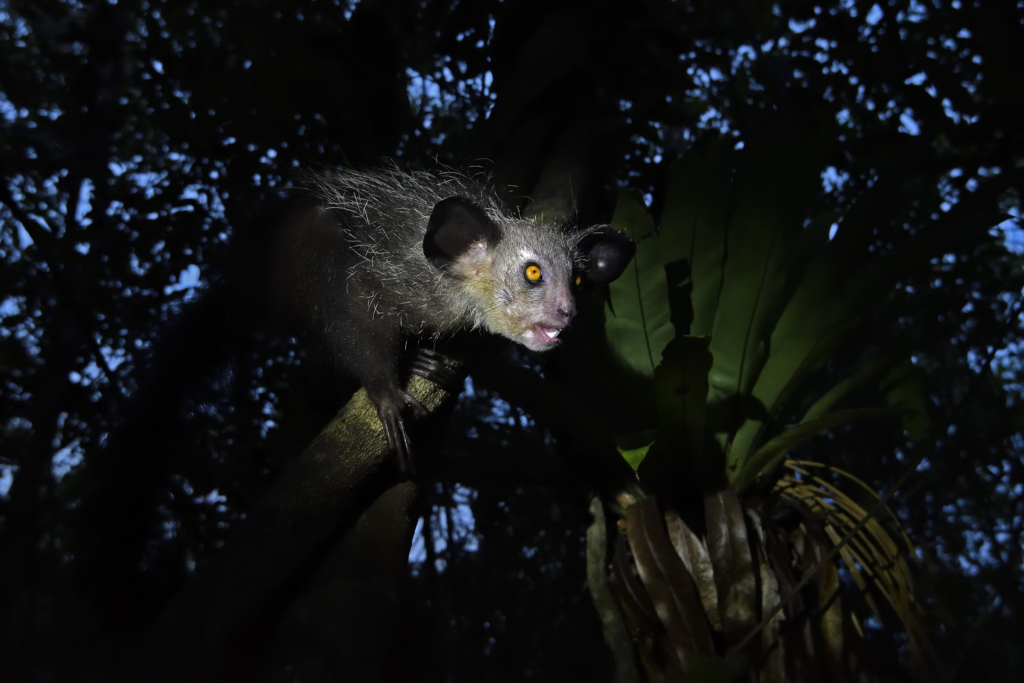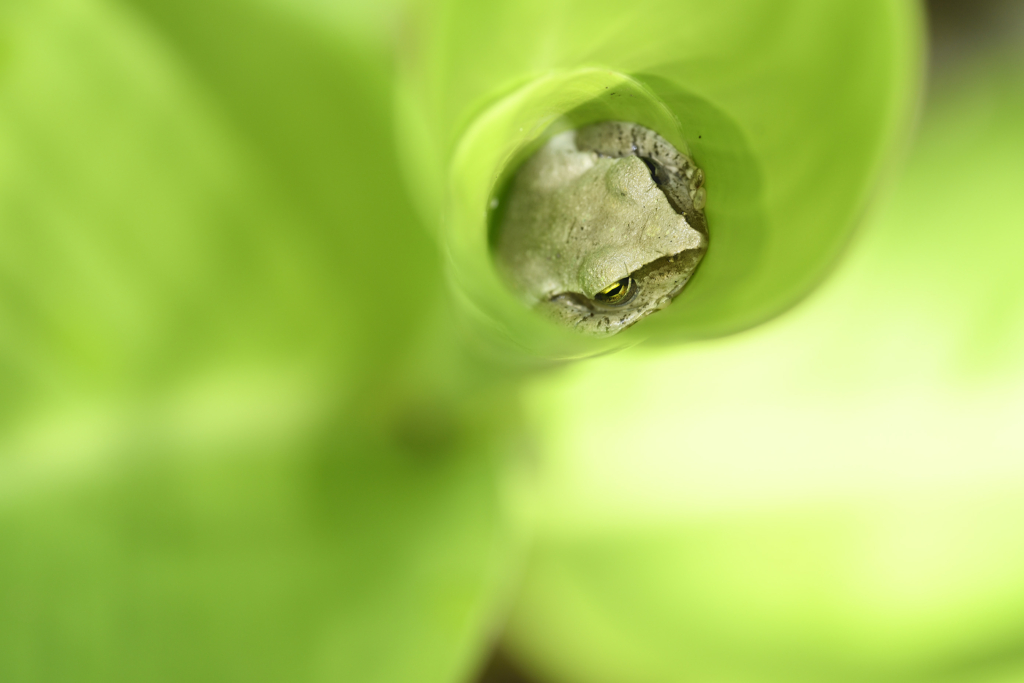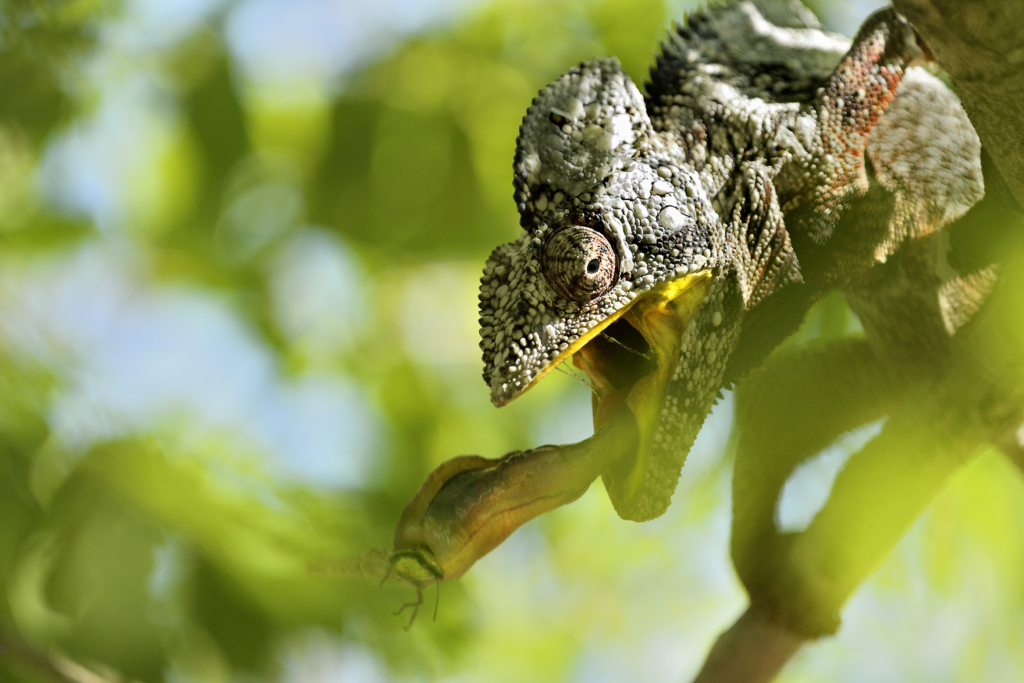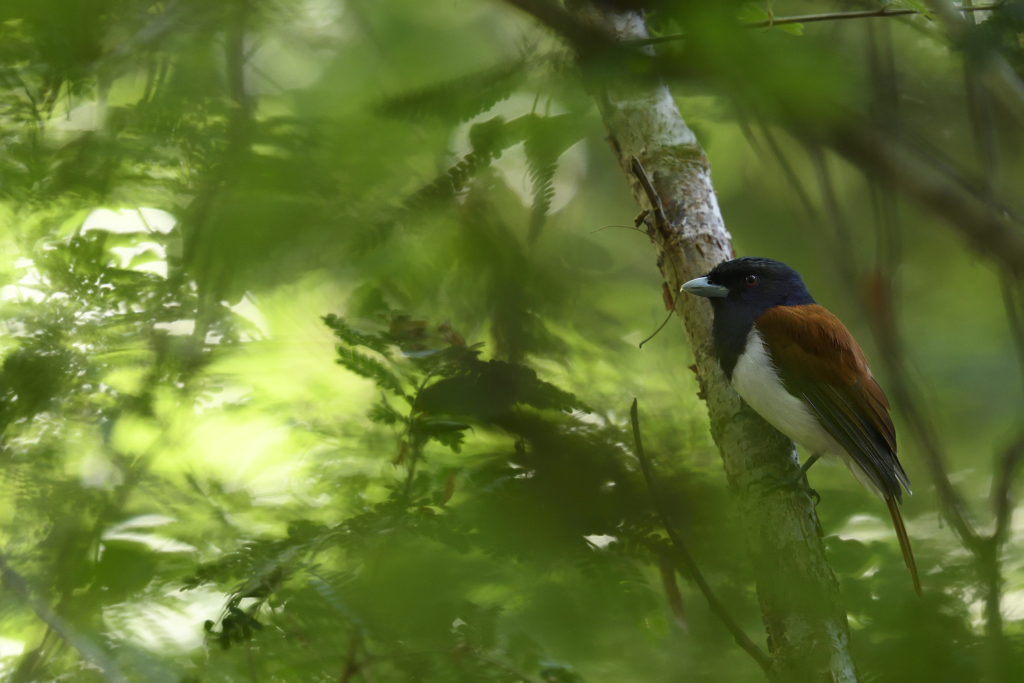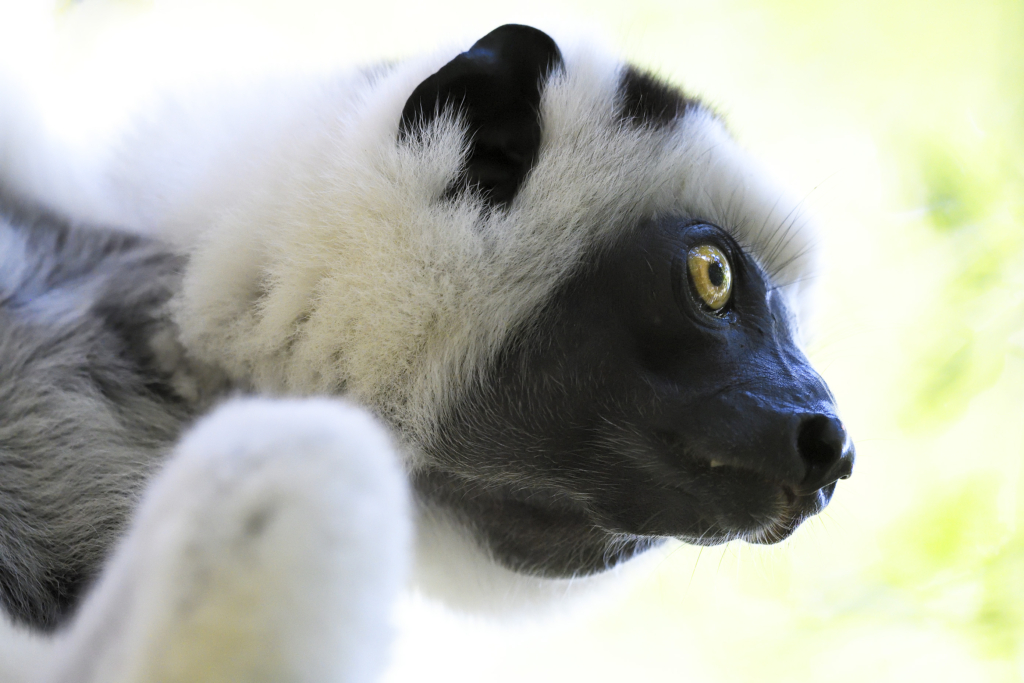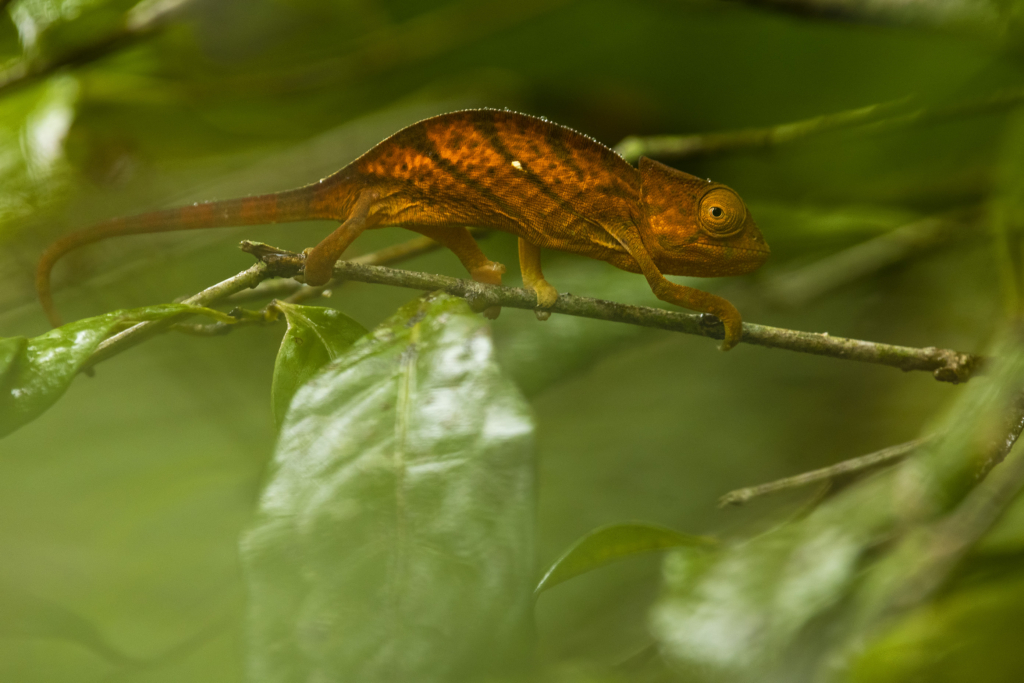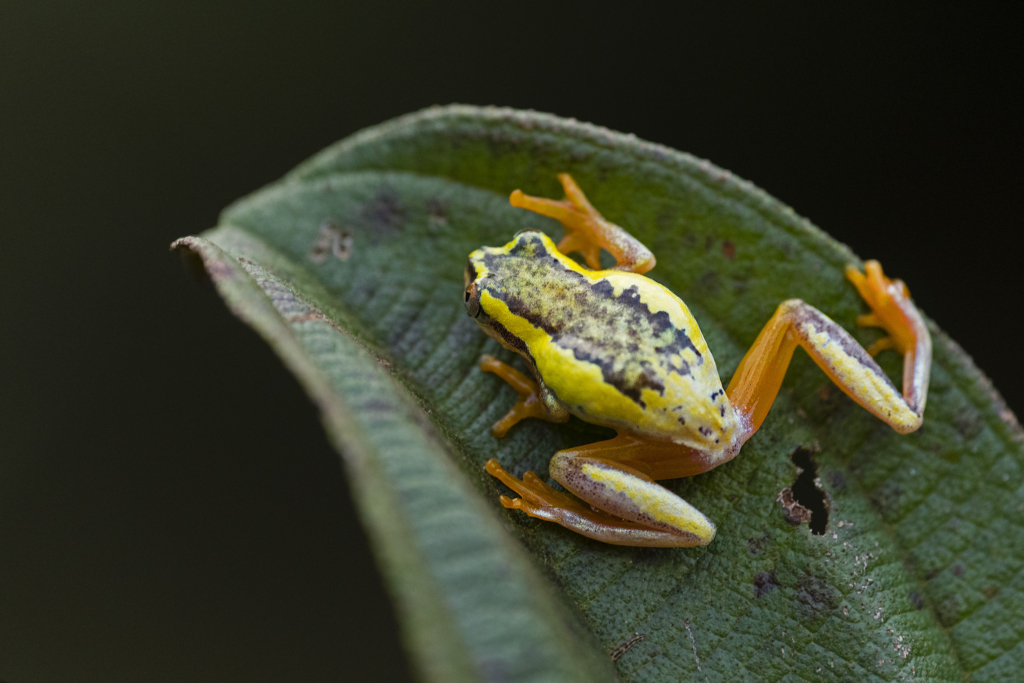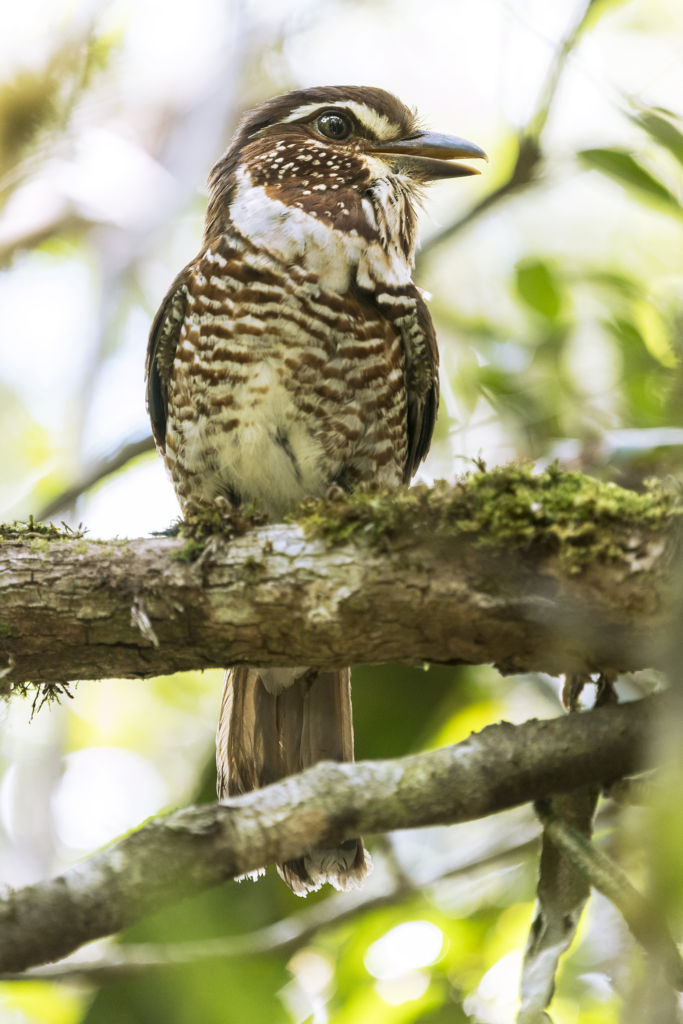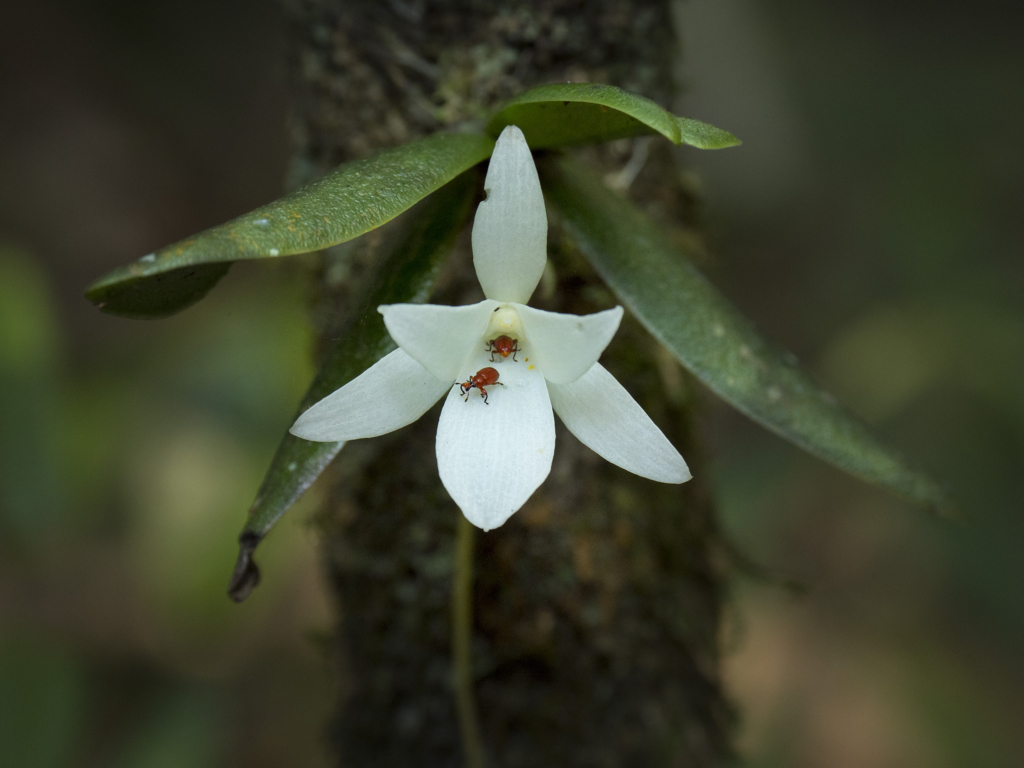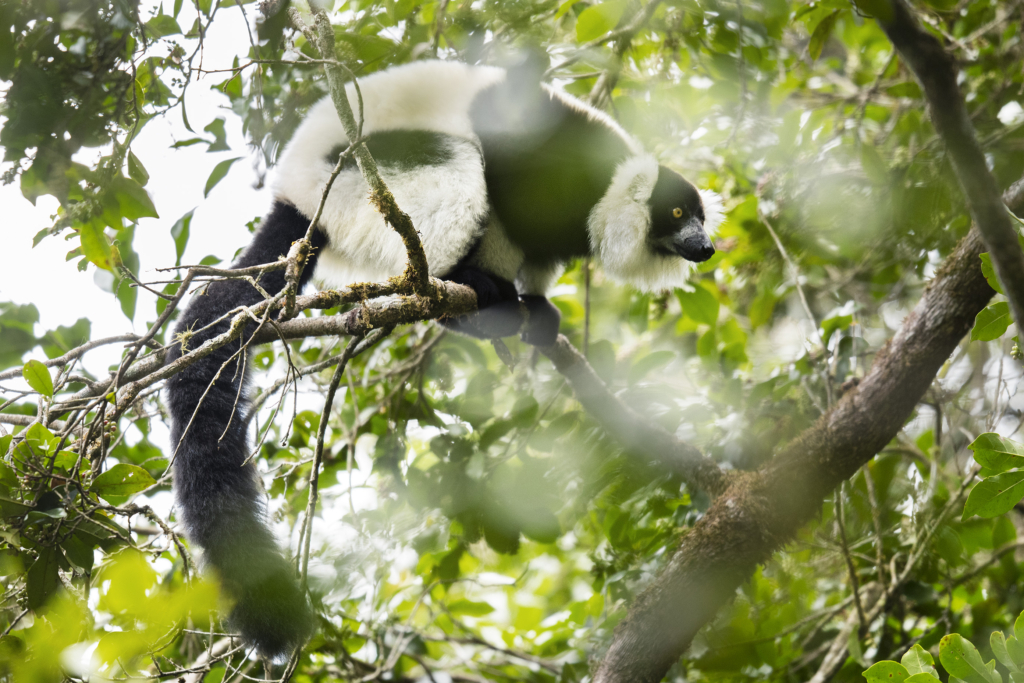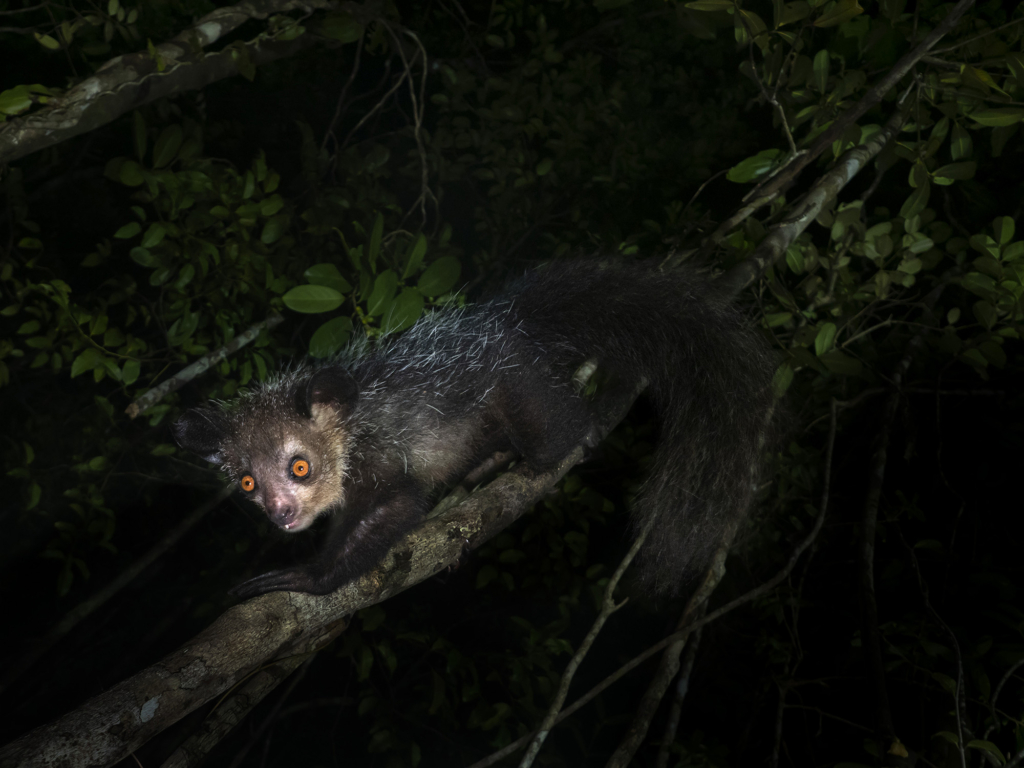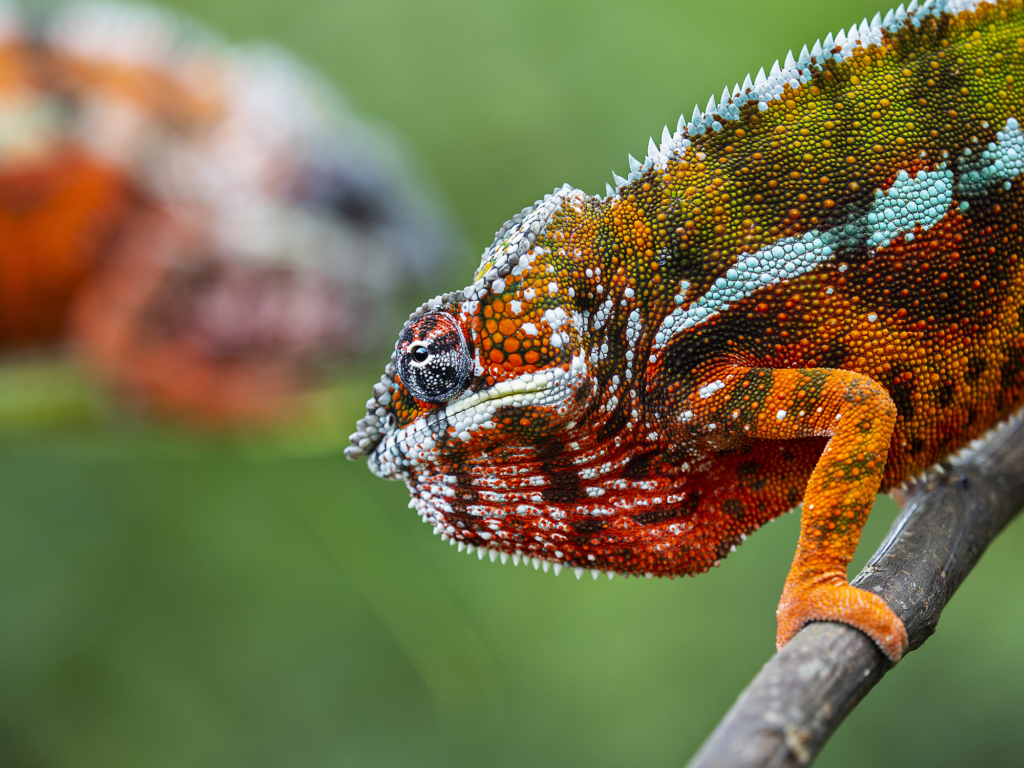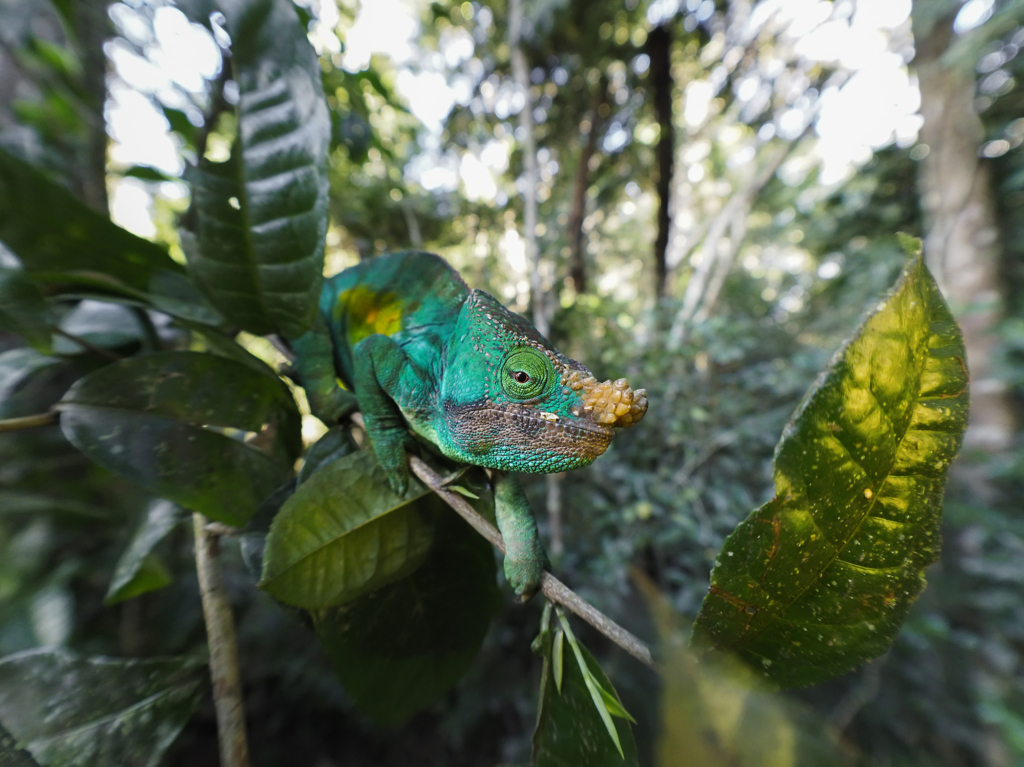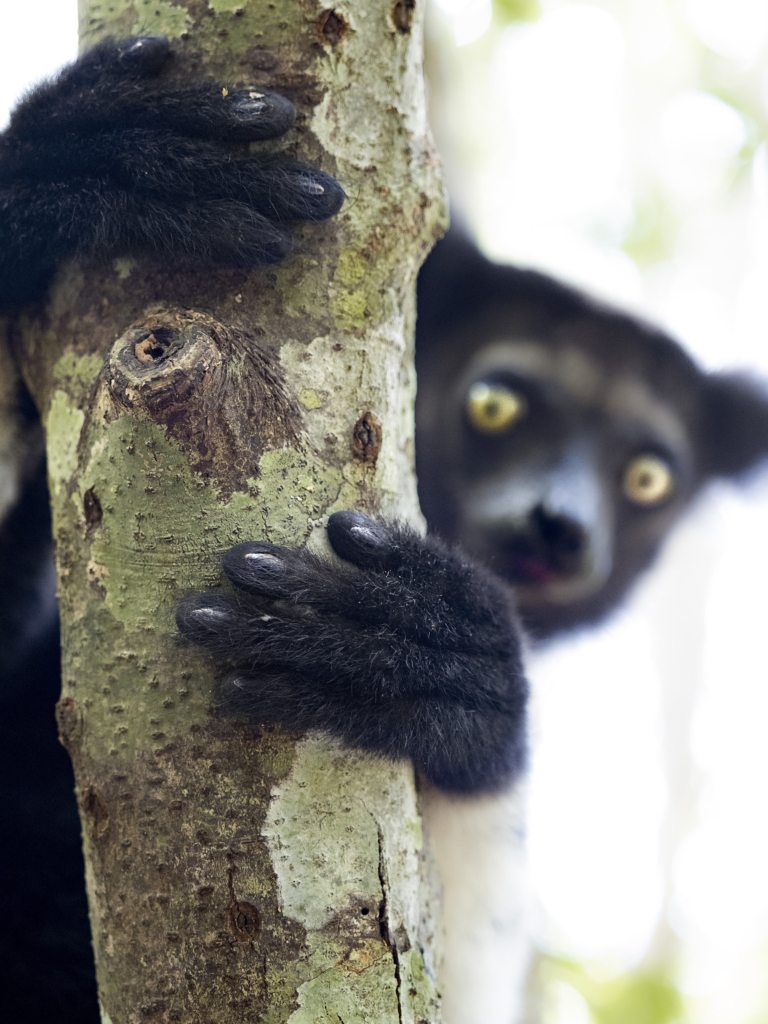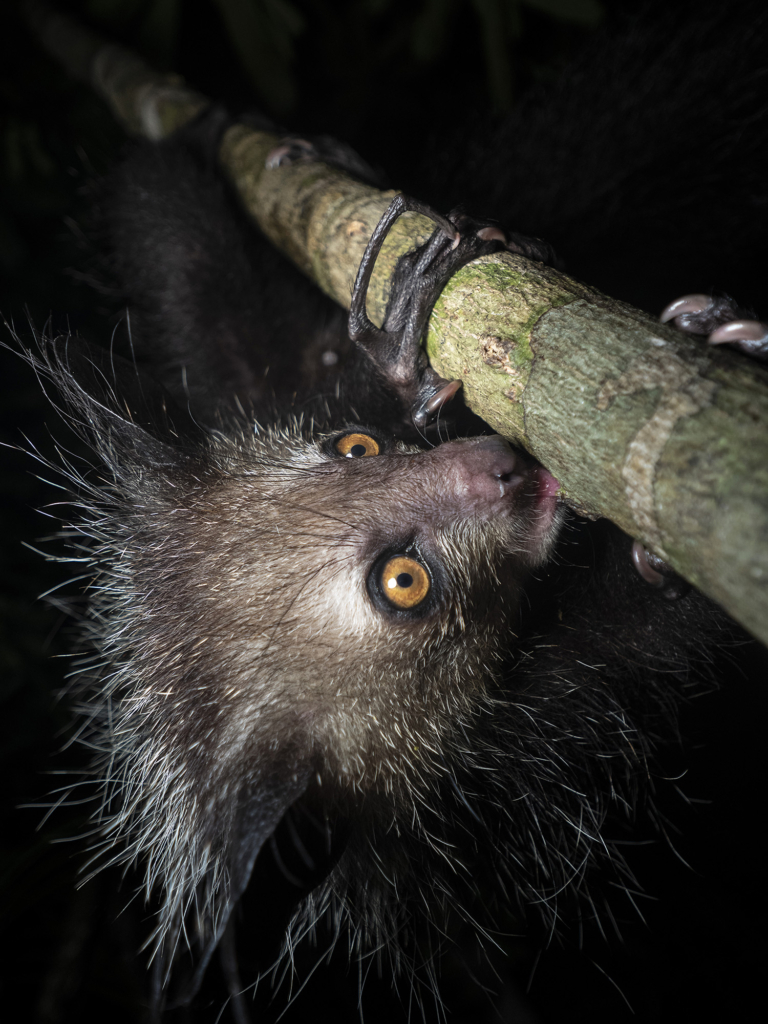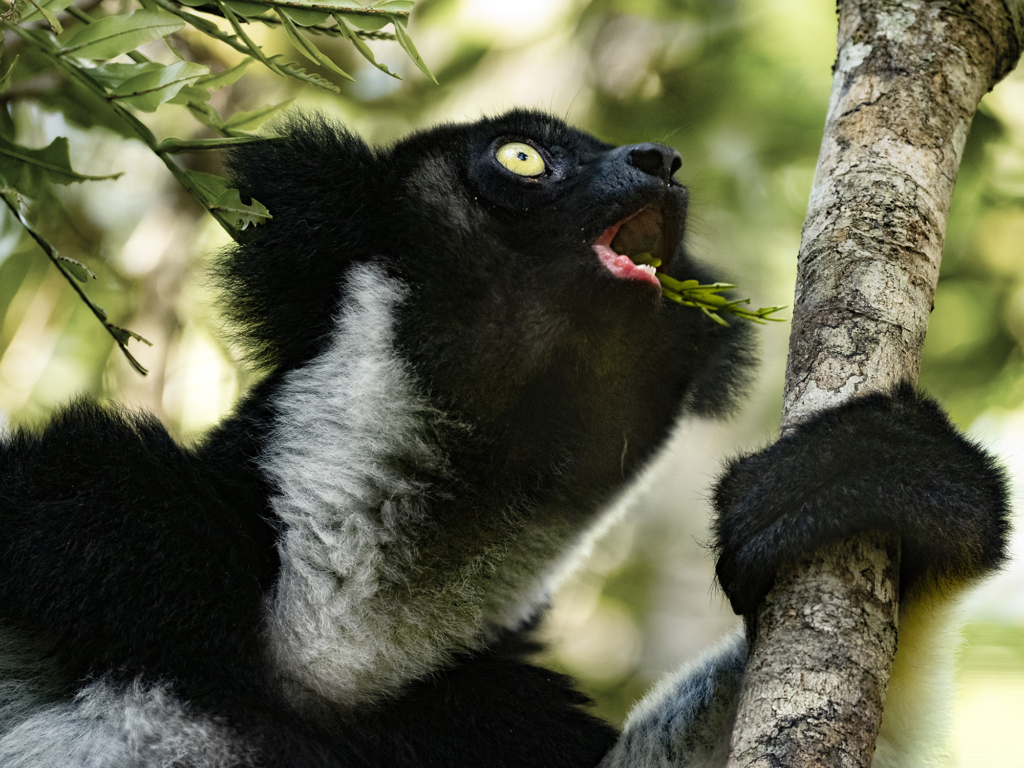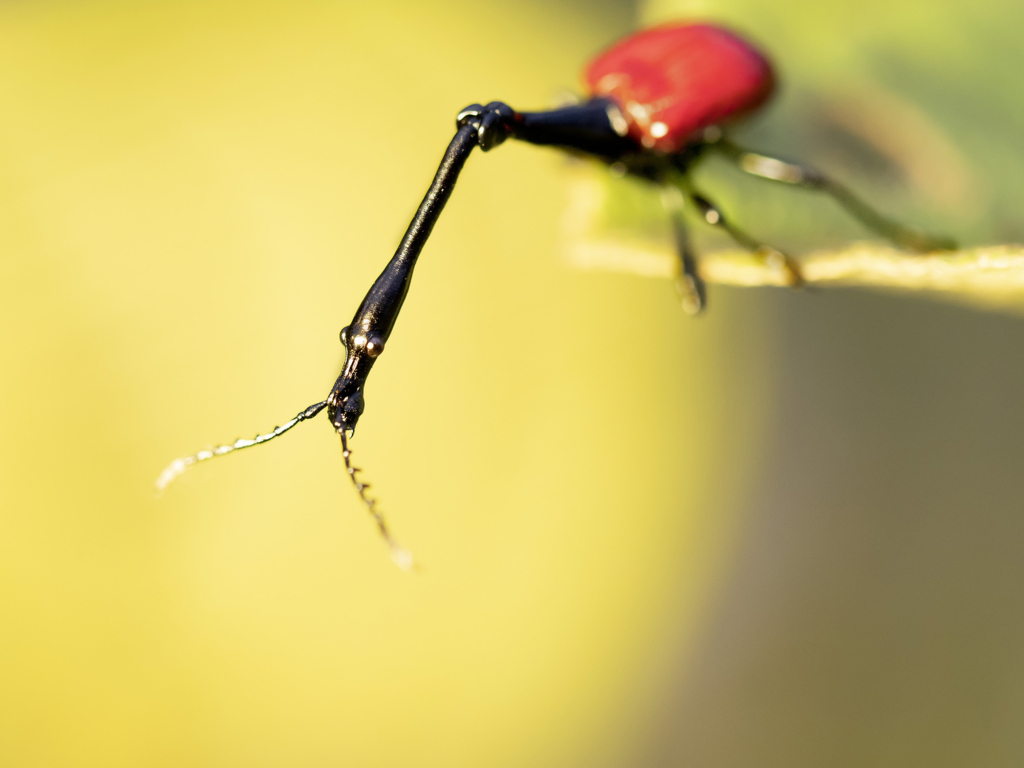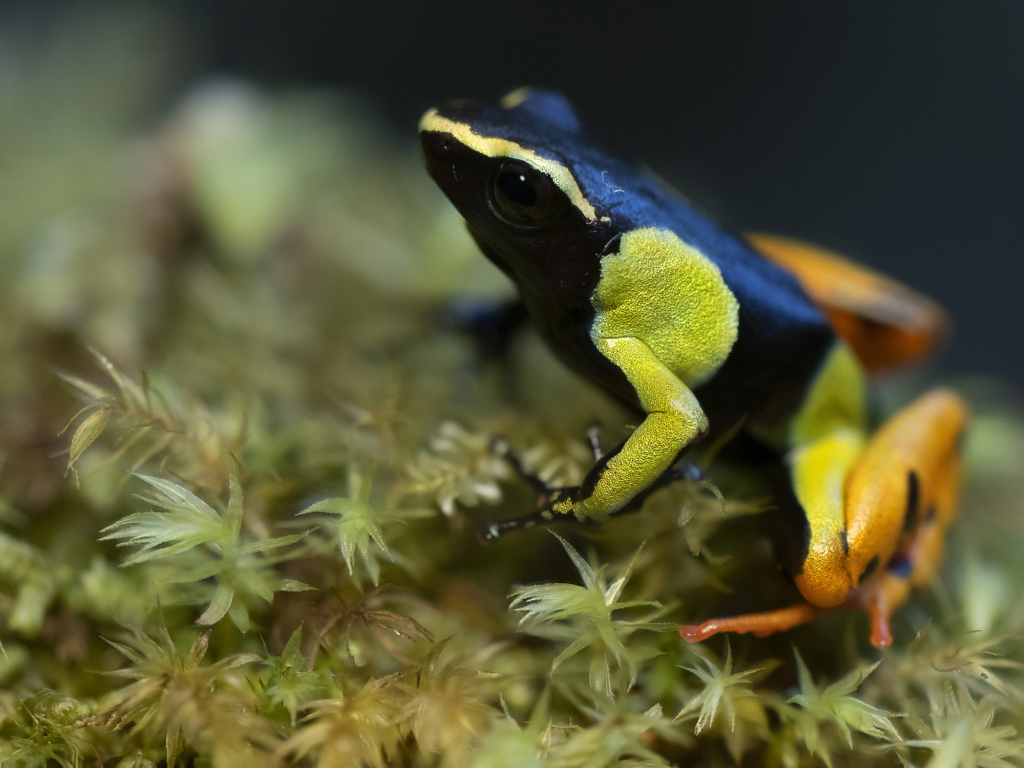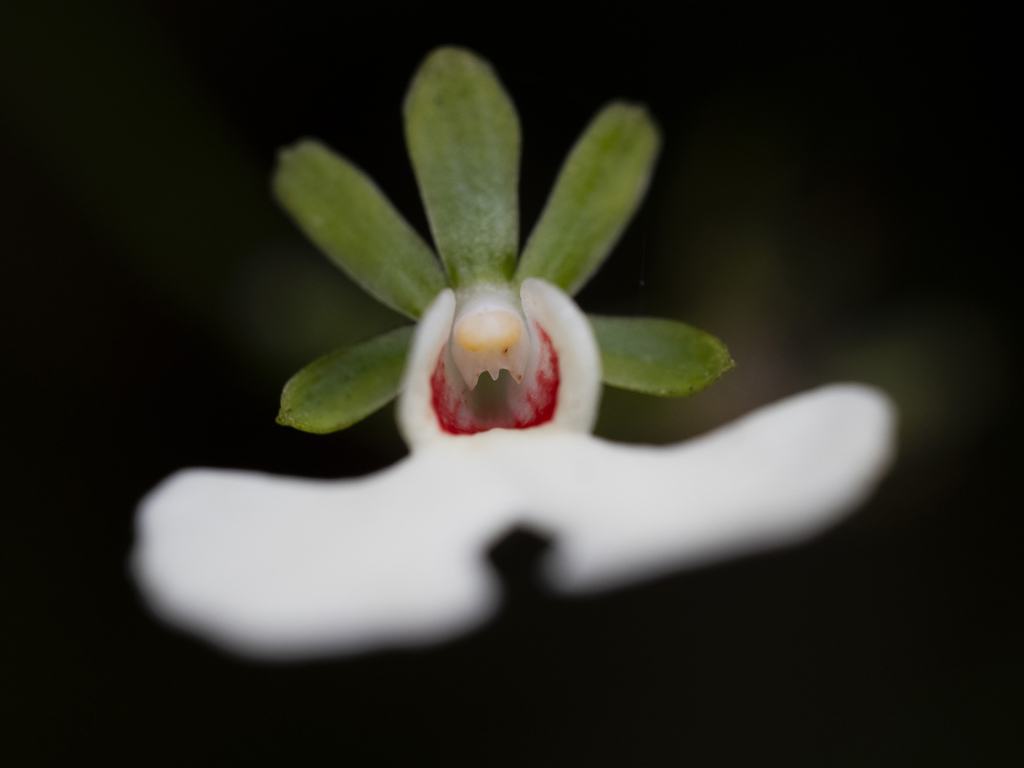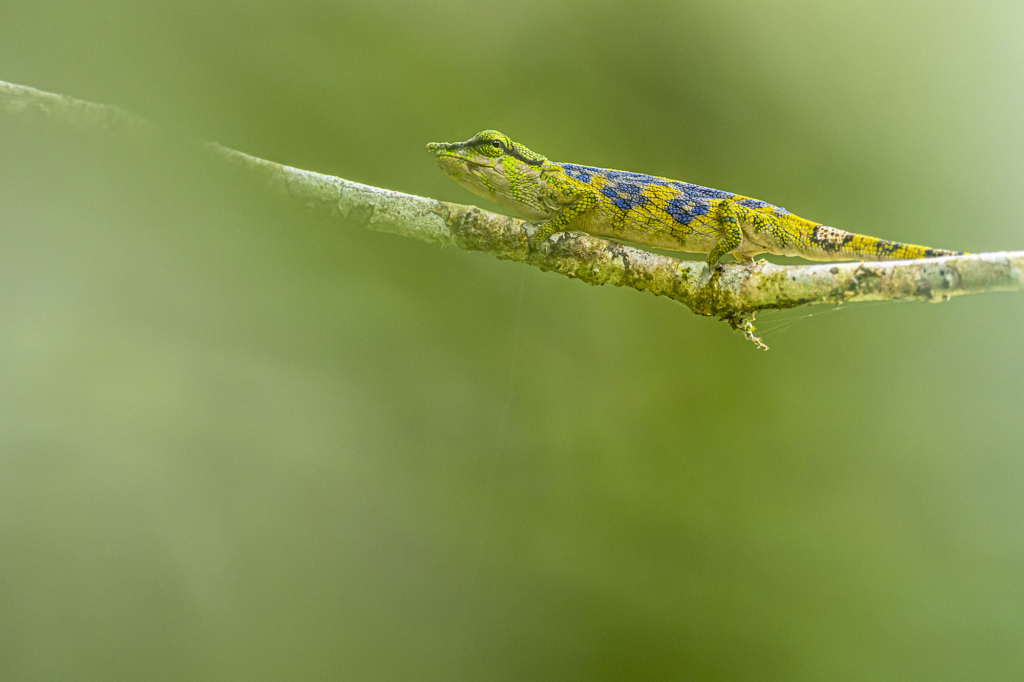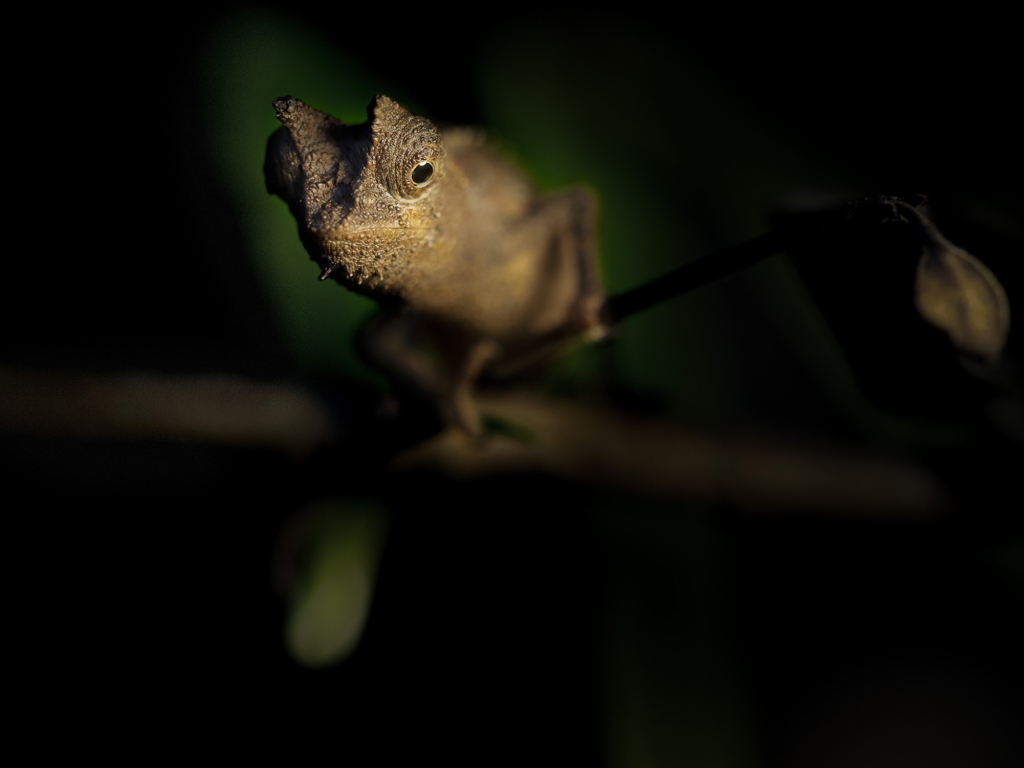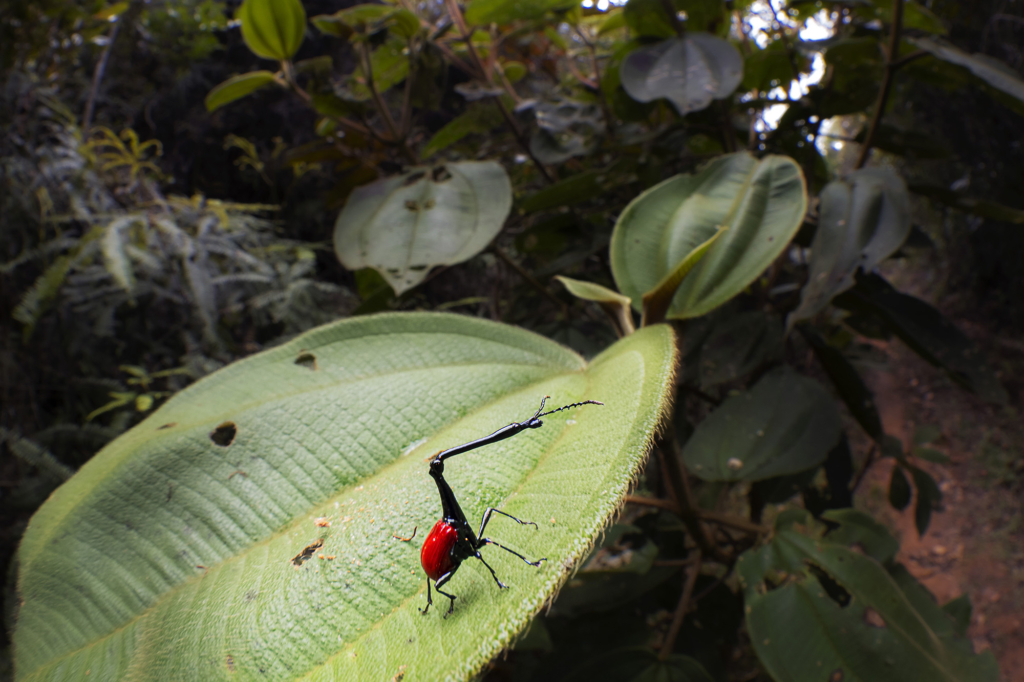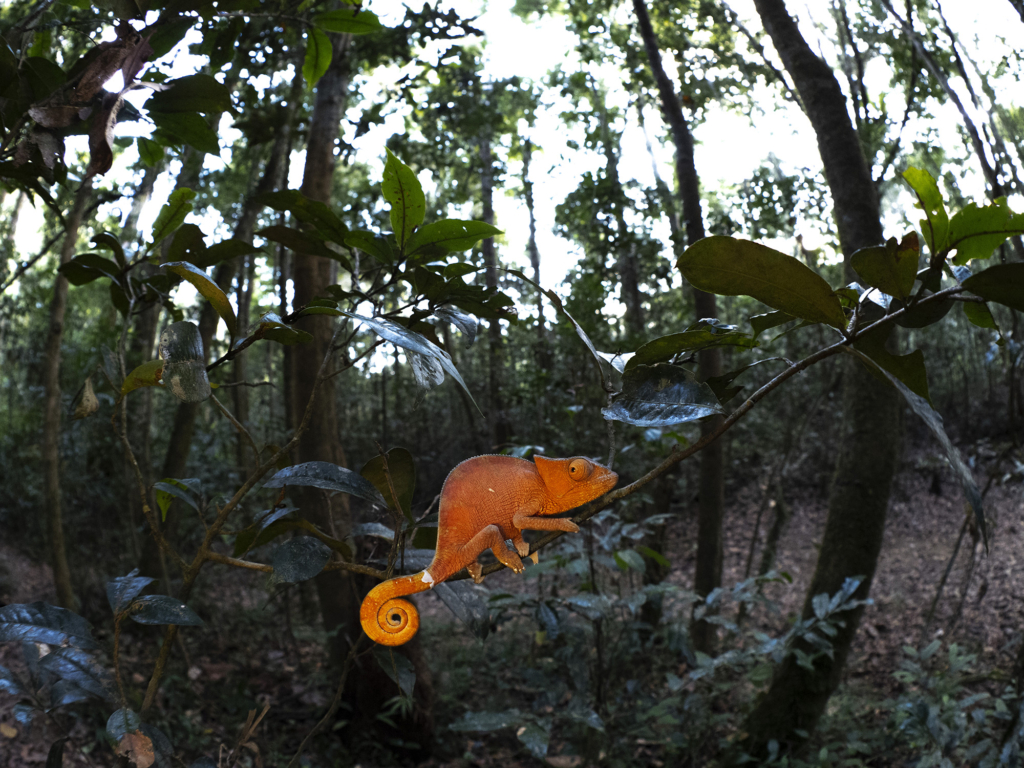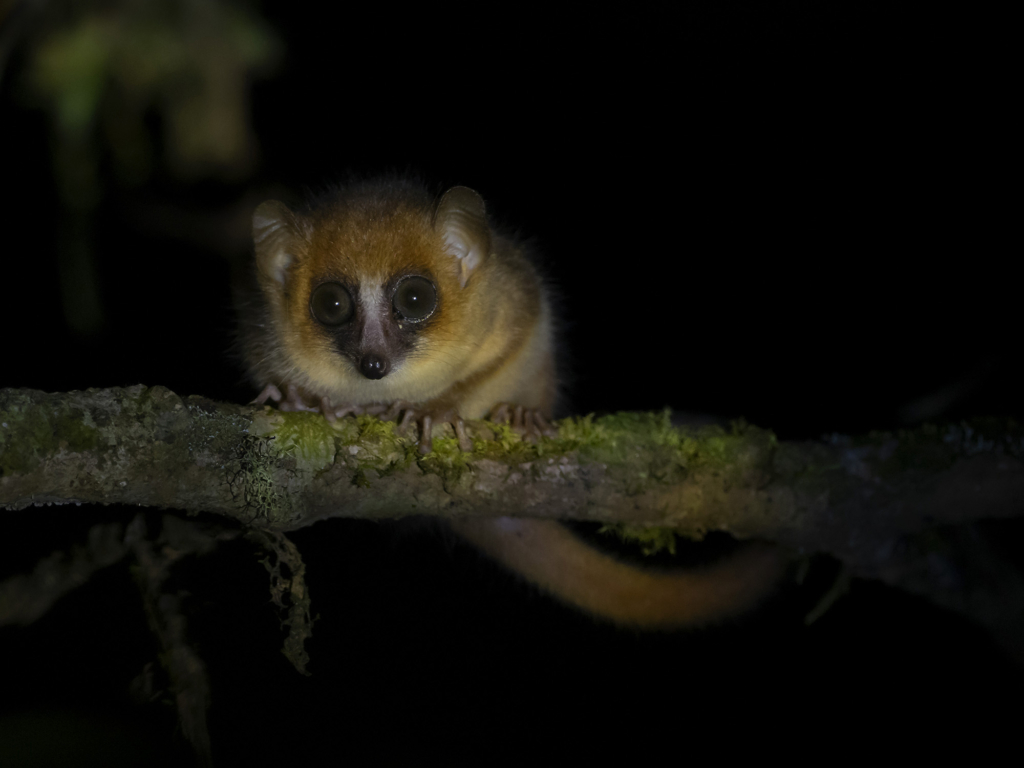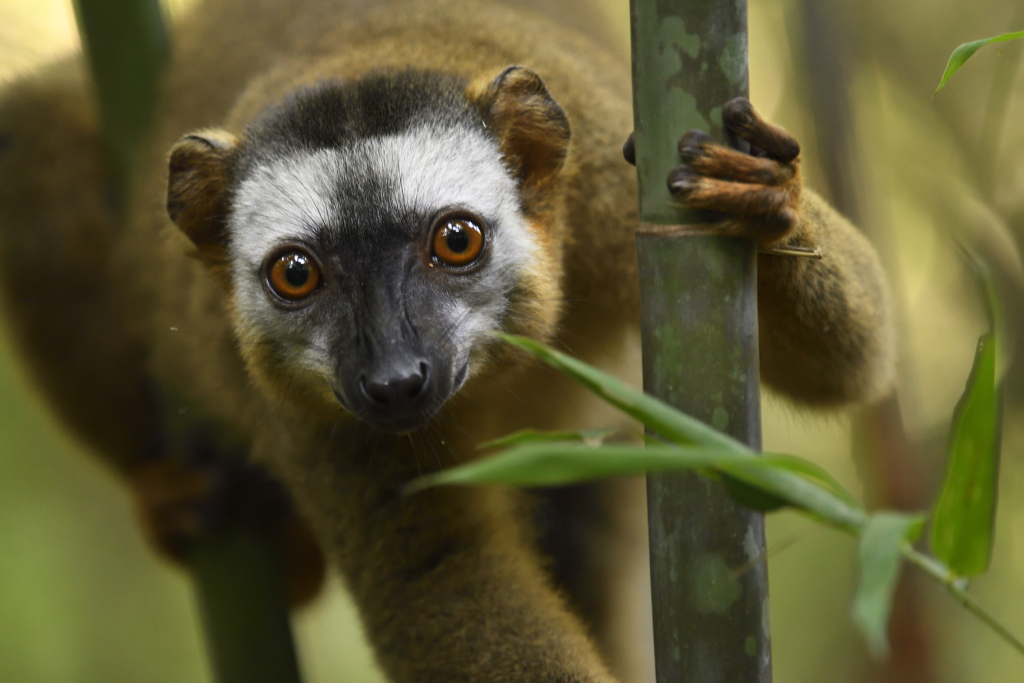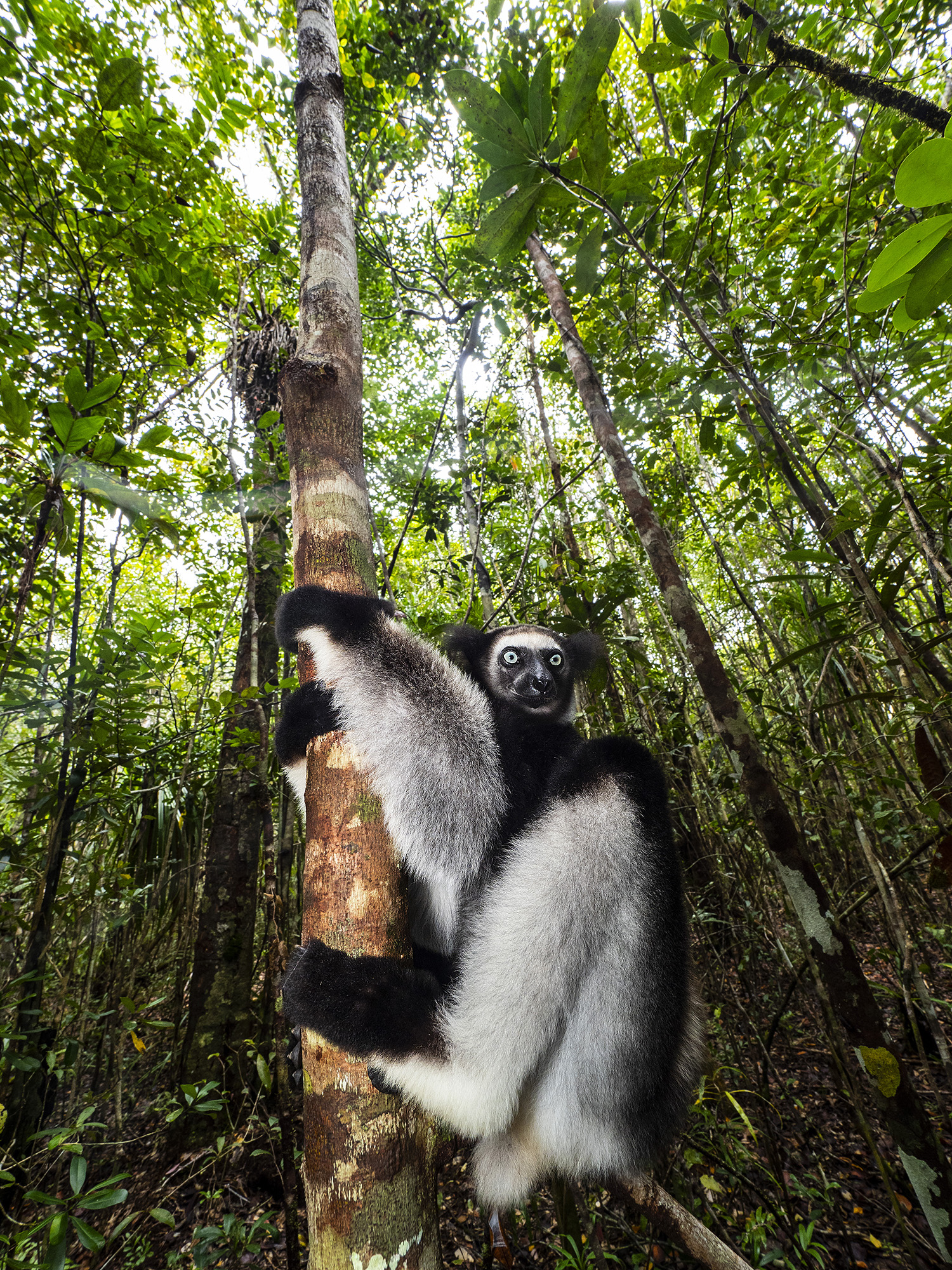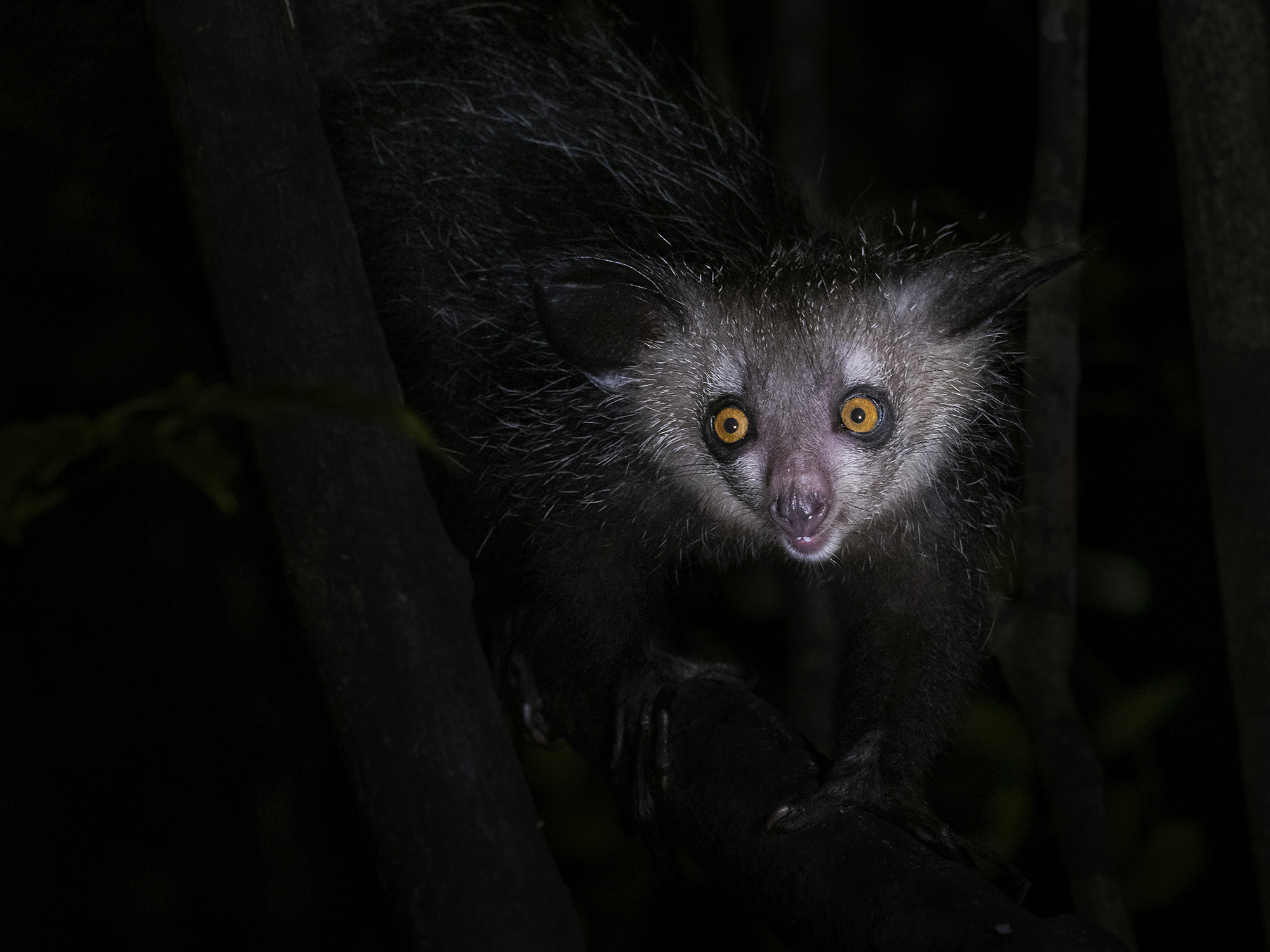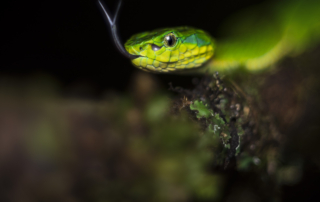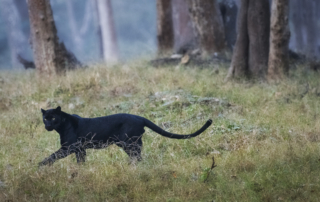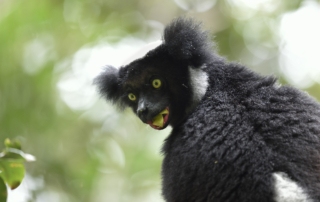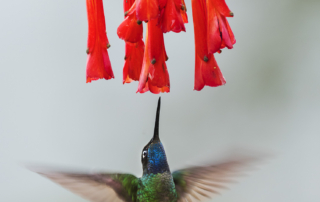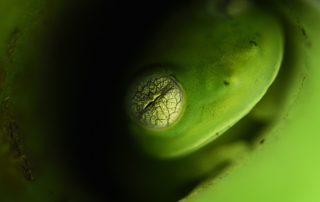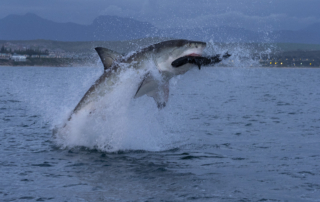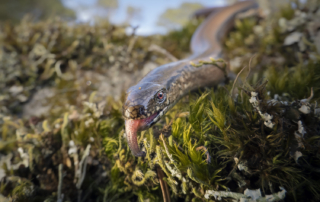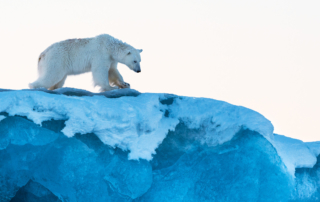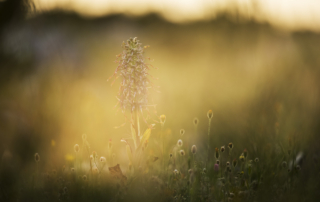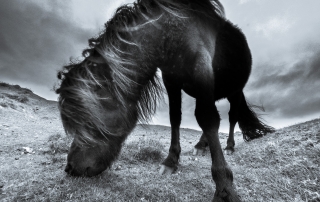
Madagascar is a mesmerising country. Isolated and geologically ancient with an flora and fauna that is completely unique. Nowhere else in the world are there so many species of chameleons. Lemurs are found naturally only here – in the whole world. Between 80-90% of all animals and plants are endemic. In Madagascar there are the strange baobab trees, insects with giraffe necks, frogs that look like poison dart frogs of South America, the smallest chameleons in the world – as small as a little fingernail, no venomous snakes but snakes that have fake twigs, branches and leaves on their heads, whole families of birds that are not found anywhere else , insects camouflaged as red flowers – YES – the list goes on! The fantastic rainforests, among the oldest in the world, house the greatest diversity of all the island’s peculiar animals and we visit several of the finest rainforests.
Madagascar is the world’s fourth largest island and a fantastic country to visit. Nature is wonderful, different and incredibly exciting. The people are curious and interested in strangers, and the social climate is soft and pleasant. Crime is low and traffic is sometimes non-existent – especially in rural areas.
We always have local guides and animal trackers with us. On the tour, we have photo workshops where Jan goes through techniques and photo ideas for the next few days’ photography. As usual, we also look at picture composition and each other’s pictures.
ANDASIBE-MANTADIA NATIONAL PARK
Next to the community of Andasibe is a cluster of rainforest areas that are one of Madagascar’s most exciting areas thanks to the rich wildlife. Indrin is found only in this part of Madagascar. We visit the Analamazaotra section which is 1,500 ha of the national park and the indrin is the star here. There are several family groups of Indris in this area. A persistent, mournful honking—almost howling—sounds from the forest as the indrin sings. The song can last up to three minutes, and when one starts singing, several can join in and form a duet or chorus. The song is strongest in the morning and late afternoon. Indrin is the largest of the lemurs. In the same area we also have chances to find the diadem sifaka, the most beautiful of the sifakas and also one of the largest lemurs. There are also brown lemurs (brown maki). We hope to find one or more species of frogs or leaf-tailed lizards. This gecko is so well camouflaged that it is almost impossible to see it against a mossy log, even if you are standing right in front of it. Another species looks like a specific leaf. Several species of chameleons are also found in the national park, including the largest species the panther chameleon. Birdlife is varied with the beautiful Madagascar Paradise Flycatcher as the crown jewel. Blue kou is an endemic bird species, as big as jackdaws, and they often follow our journey through the forest. In the evenings we go out to photograph nocturnal lemurs, gecko lizards and chameleons.
RANOMAFANA NATIONAL PARK
This exciting mountain rainforest of 41,600 ha is characterized by dense vegetation and many rivers and creeks, e.g. the great Namorona River. Here we are searching for several different species of lemurs, e.g. the golden bamboo lemur which was discovered here as recently as 1991. It is found only here and the national park was established to protect this lemur. There are also another 11 lemur species in the forest, e.g. the equally rare and endangered greater bamboo lemur and brown lemur and the great Milne-Edwards’ sifaka. There is also a multitude of insects here, we hope to find the distinctive giraffe neck weevil, a beetle-like weevil with an extremely long “giraffe neck”. We are also looking for the colorful mantled frogs – as colorful as South America’s poison dart frogs. In the rainforest there are many species of birds that are endemic such as asity, ground blue crows, owls and night owls. After dusk we photograph nocturnal frogs, mouse lemurs and chameleons.
PALMARIUM AND AKANIN’NY NOFY
No animal in Madagascar is as fabled as the aye-aye. It has eluded the people of Madagascar for a long time and has given rise to numerous myths, stories and superstitions. Already in the 70s, there were alarming reports that the aye-aye was disappearing completely from Madagascar’s nature due to persecution and deforestation. Later, it has been shown that it occurs sparsely over larger parts of the country than the researchers previously thought – however very scattered and with a population that is now declining. Since it is only nocturnal and usually shy, it is normally difficult to find and approach. The aye-aye is a unique animal and known from many nature films. It is larger than most people think and is one of the largest lemur species and also the world’s largest nocturnal primate.
In the dimness of the darkness, it looks like a troll or a witch with a pointed head, large elf ears and long black-grey striped fur with a large bushy tail. It moves unlike other lemurs – more like a cat as it climbs up and down the trunks in the forest. Most striking are the front paws – or the hands where the fingers are long and crooked. The middle finger is extra long and thin with a long, crooked nail. With its fingers, it taps during the search for food on darkened tree trunks. With its large ears, it can then hear if there is a caterpillar inside the wood and easily opens the trunk with its sharp rodent-like front teeth. Then it sticks its long middle finger in like a long crooked dental instrument and fishes out the yummy grub. It is like a lemur woodpecker.
The aye-aye leave their nest 30 minutes before sunset and only come back at dawn. On the small island, which is a private nature reserve where they are protected from poaching, there are half a dozen individuals and it is normal to see several animals during the early night. At our lodge there is a lower deciduous forest where the BBC has filmed many of the scenes with jumping indris. Since the trees are not very tall and the forest is more sparse than at Andasibe-Mantadia, there are good opportunities for nice interior shots. Indrin is drawn differently here with larger gray areas in the fur. There is also a black and white version – a lemur that is graphically drawn as a panda.
This is a tour not only for the most avid nature photographers, but also for those of you who want to experience some of the world’s finest natural environments and their wildlife up close.
Itinerary
Day 1 (24/10) (Dinner)
Arrival in Antananarivo. Transport to our hotel in Antananarivo.
Day 2 (25/10) (Breakfast – Lunch – Dinner)
We begin our journey towards Ranomafana. We will spend the night in the city of Antsirabe. As the roads are bad, our journey takes a little longer than we are used to from home. Along the way there are exciting landscapes and we make several stops to photograph landscapes and people.
Day 3 (26/10) (Breakfast – Lunch – Dinner)
We continue towards Ranomafana In the afternoon we arrive at Ranomafana. After arriving at the national park, we set off along a road through the area to photograph nocturnal frogs, mouse lemurs and chameleons.
Day 4-5 (27-28/10) (Breakfast – Lunch – Dinner)
Full days in Ranomafana National Park with a guide and local animal trackers, only interrupted by lunch and some mid-day rest. The exciting mountain rainforest is characterized by dense vegetation and many rushing streams, including the great Namorona River. We are looking for several different lemur species, e.g. the golden bamboo lemur that was discovered here as late as the 80s. It is found only here and the national park was formed to protect this lemur. The forest is also home to the rare and endangered greater bamboo lemur, brown lemur and the large Milne-Edwards’ sifaka. A swarm of insects with it
distinctive giraffe-necked weasel, a beetle-like weasel with an extremely long “giraffe neck”. We are also looking for the colorful mantled frogs – as colorful as South America’s poison dart frogs.
After dinner we go out again, for those who can bear it, to photograph nocturnal frogs, mouse lemurs and chameleons.
Day 6 (29/10) (Breakfast – Lunch – Dinner)
Today we go to the north to Antsirabe. Along the way, there are several opportunities to photograph the landscape on the Hauts Plateaux. Here there are typical Madagascan mud-clay villages and a landscape with lots of rice terraces, people at work and picturesque villages. We arrive in the evening at Antsirabe, one of Madagascar’s largest cities. The city was founded by Norwegian missionaries in the 19th century and is located at an altitude of approx. 1500 m.
Day 7 (30/10) (Breakfast – Lunch – Dinner)
After breakfast we continue north towards Antananarivo which we pass on the outskirts and then further east towards Andasibe-Mantadia National Park, one of Madagascar’s finest mountain rainforest areas. But before we leave Antsirabe, there is an opportunity to photograph some of the city life. The street scene is characterized by pousse-pousse (rickshaws that you run with, usually barefoot).
In the evening, once we reach the rainforest, we go out to look for nocturnal mouse lemurs, gecko lizards and sleeping chameleons.
Day 8 (31/10) (Breakfast – Lunch – Dinner)
We will have an early start in the morning and head into the rainforest all day with knowledgeable guides and animal trackers, only interrupted by a short lunch break at a restaurant. Even today, the main attraction is the metre-long indrin, the world’s largest lemur. It is found only in this part of Madagascar and is found here with several family groups. In the same area is also the beautiful diademsifaka. Brown lemurs (brown maki) are also found here. We hope to find one or more species of frogs or of the strange leaf-tailed lizard. This gecko is so well camouflaged that it is almost impossible to see it against a mossy log, even if you are standing right in front of it. Blue kou and other kou are birds, as big as nightingales, that follow our journey through the forest. After dinner, there will be night photography again.
Day 9 (1/11) (Breakfast – Lunch – Dinner)
In the morning we visit the private reserve at Vakona Lodge. This is an island with lemurs. We get close contact with brown lemur, bamboo lemur, black and white lemur (vari) and possibly diadem sifaka.
We then head east through a landscape where the climate gradually becomes wetter and warmer. About 3 hours. Arriving at the small village of Manambato on the shore of a large lagoon, we change the car for a boat, which then takes us through a large lagoon landscape to the lodge and the reserve Palmarium and Akanin’ny nofy.
Day 10-11 (2-3/11) (Breakfast – Lunch – Dinner)
After sunrise, we head out into the lodge’s forest to find indri and other lemurs. You will then have the opportunity to familiarize yourself with the area to make your own photographic excursion. You can photograph many species of chameleons, lizards, frogs and exciting insects up close at your own pace. After breakfast there will be your own photography or rest. In the evening we make a trip to the aye-aye island. Then late dinner.
Day 12 (4/11) (Breakfast – Lunch – Dinner)
After breakfast we leave the area by boat to the waiting car which will take us back to the capital Antananarivo through a landscape of rice terraces, small villages and mountain ridges about 6 hours by car. In the evening farewell dinner at our hotel in Antananarivo.
Day 13 (5/11) (Breakfast – Lunch)
After breakfast through Antananarivo to a large craft market. Then lunch and transfer to the airport and journey home.
Photographic leader
an Pedersen, born in 1957, is a photographer, writer and world traveller. He has more than 33 years of experience leading nature tours and nature photography tours all over the World – in biomes ranging from deserts to rain-forests. He has led tours in 55 different countries and has worked for several major Swedish tour operators. Jan is highly appreciated as a tour leader, guide and nature photography guide. He has produced tours and trained many new tour guides. Jan carries the idea of ecotourism close to his heart. He has been a member of the Swedish Nature Photographers Association (Naturfotograferna/N) since 2014 and is an internationally awarded photographer. In 2015 he was the overall winner in the international photo competition Asferico. He is also a very experienced teacher of photography and nature photography, arranging annual courses for societies and open colleges since 2001. He also teaches media training programmes.
Jan is one of Swedens most well-published nature book authors. His first book ”I Arabiens öknar” was awarded WWF Sweden’s Panda Book of the Year for children’s books in 2000. His singing book ”Fågelsång” is the all-time top-selling nature book in Sweden. It has sold a total of half a million copies in Sweden, Finland and Norway, as well as having been issued in eight other languages. The sequel ”Vilda djur” was also a success, and was published in Norway and Finland, and in four other European languages. He has also authored popular books such as ”Fågelresor”, ”Mitt I Naturen”, ”Fågelsång runt knuten”, ”Lyssna på djuren”, ”Djur i Världen”, ”Sveriges Fåglar – en fälthandbok för alla”, and ”Fåglar I Sverige och Norden”.
Jan has written numerous articles for newspapers and magazines about wildlife and nature. He is also often engaged as a lecturer for a broad audience. Jan has also worked as a warden and a guide in Swedish nature reserves.
